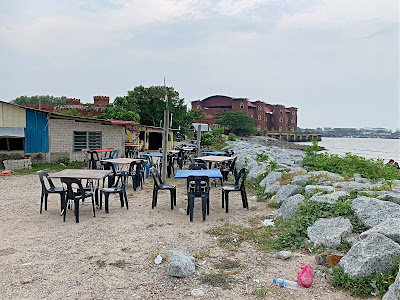Built in 1771 and completed in 1780, the Kuala Kedah fort was the place where wars were fought to maintain Kedah's independence against many enemies (Siamese, Achehnese, and Bugis). It was built with the help of the Portugese. Its location is rather unique; its western wall faces the Straits of Malacca and southern wall overlooks the Kedah River.
The original fort was made from clay, timber, and bamboo, and used by the Portugese as a trading depot.
In 1619 Aceh sent over a fleet, destroyed the fort and ousted the Portugese.
The fort was rebuilt again but only to be destroyed again by the Bugis in 1770.
Francis Light took over and evicted the Bugis. The fort was reinforced again with the help of imported Indian labor in 1780. The Siamese attacked and destroyed the fort AGAIN in 1838.
The original fort was made from clay, timber, and bamboo, and used by the Portugese as a trading depot.
In 1619 Aceh sent over a fleet, destroyed the fort and ousted the Portugese.
The fort was rebuilt again but only to be destroyed again by the Bugis in 1770.
Francis Light took over and evicted the Bugis. The fort was reinforced again with the help of imported Indian labor in 1780. The Siamese attacked and destroyed the fort AGAIN in 1838.
British Archway
Kacapuri Archway
This spot is the closest we get in looking for a "beach".
Burning the paddy fields
Kuala Kedah is about 20 minutes (23km) from Alor Setar. If you walk across the Jambatan Tok Pasai @ Tok Pasai bridge, you will see a great view of the fishing village. It is the bridge that cross the Kedah River before the river empties into the Straits of Malacca. This bridge was named after an Islamic Scholar who came from Pasai, Indonesia. He was hunted by the Dutch for propagating Islam and fled to Kuala Kedah in 1844.




















































